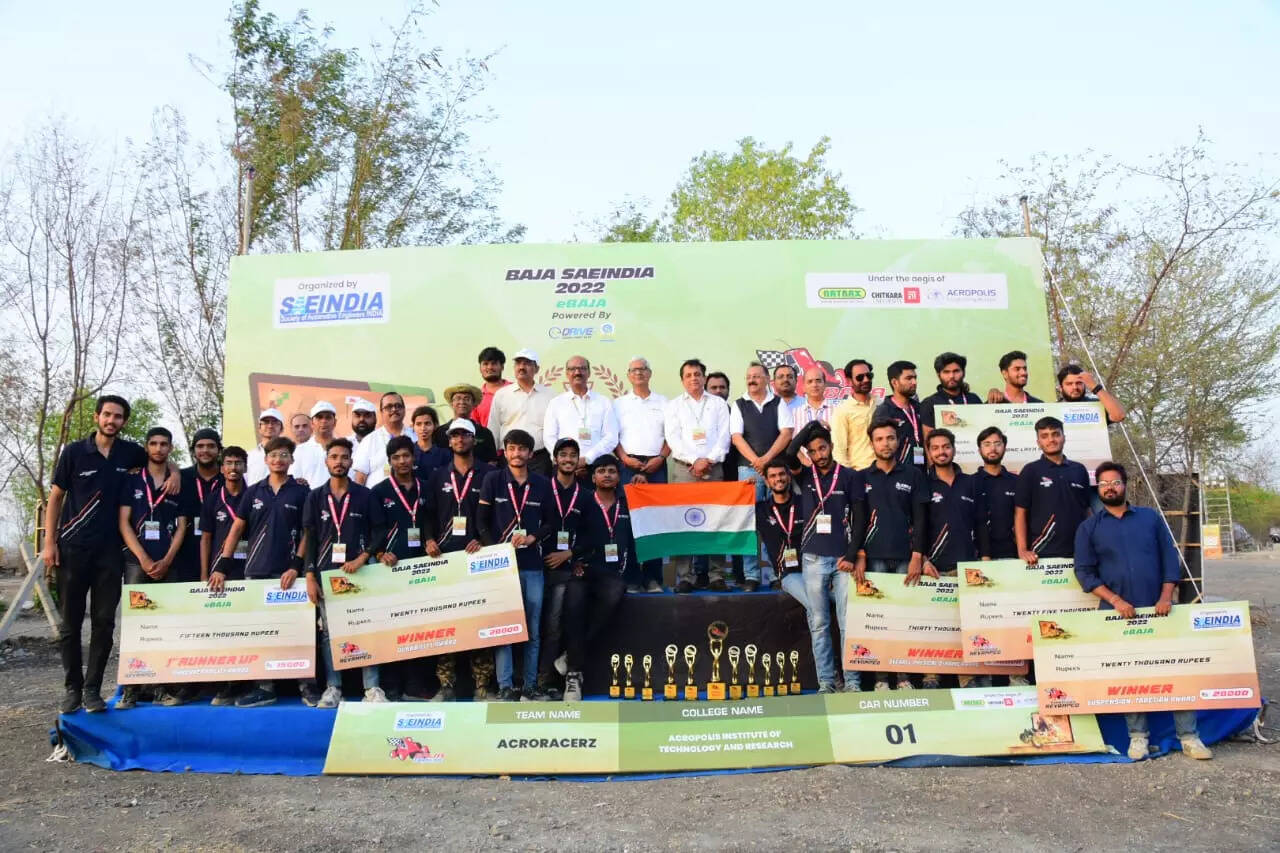
The 8th edition of eBAJA saw 21 teams participating in the final endurance round, the most demanding of all, in the engineering student level competition of battery powered vehicles. It was the first time in the history of BAJA SAE India that the eBAJA was conducted independently, which included a gruelling 4-hour long endurance race.
eBAJA is an electric engine driven BAJA event organised by SAEINDIA. BAJA SAE India was first held in 2007. eBAJA is an intercollegiate design competition. Teams of students need to design and build electric powered All-Terrain Vehicle (ATV) that has Traction motor of 48V with fully automatic transmission having 10.83 Gear Ratios and 160 ah of battery pack.
The competition requires student teams to design, develop, and source components, and build their own ATVs. The objective of the competition is to simulate real-world engineering design projects and their related challenges.
In all 34 teams had applied for eBAJA this year. The four-day event included static event finals for Design, CAE, Cost, Innovation, and Dronacharya Award. The dynamic rounds included Acceleration, Sledge pull, Manoeuvrability, Suspension & Traction event, followed by the endurance race.
The four-hour-long battle saw teams vying with each other for the top honours with electric motors powering their vehicles on the 4 km long BAJA track at the NATRAX Proving Ground at Pithampur. Team Acroracerz, of Acropolis Institute of Technology & Research, Indore, took pole position after completing 32 laps in the stipulated time.
E-Ziba, an all-girls team representing Shri Vishnu Engineering College in Kovvada, Andhra Pradesh, came second with 29 laps, and Team Manipal Racing Electric followed in the third position with 27 Laps, but with a longer duration. Team E-Ziba was leading the pack with a lead of 6 laps, but it lost precious and with it the lead due to technical snag which forced the car to go for a pit stop.
Events like BAJA, which takes place overseas too, are like crash courses for students to prepare themselves better for the industry. Students participating in the eBAJA would be looking at entering the growing electric vehicle (EV) industry, which is also looking for solutions as the industry collectively is also at early stages of the learning curve. There’s an mBAJA event too, where the ATVs use internal combustion engines.
Vimal Mulchandani, Senior VP, Volvo Eicher Commercial Vehicles, who was also the chief guest at eBAJA, said, “Electric vehicles are facing challenges in terms of safety, durability, cost, range, weight and supply chain. We have to develop reliable battery technology under the Make in India initiative and make ourselves independent of these global challenges”.
The annual BAJA SAE India also sees a recruitment drive by OEMs and suppliers. Many currently serving industry professionals had also participated in the event as students. Events like BAJA can also help in creating buzz and interest among engineering students to join the automotive industry. And that was a key reason for industry veteran and former MD of Mahindra & Mahindra, Pawan Goenka, who was also the first SAE India President to play an instrumental role in bringing BAJA to India.